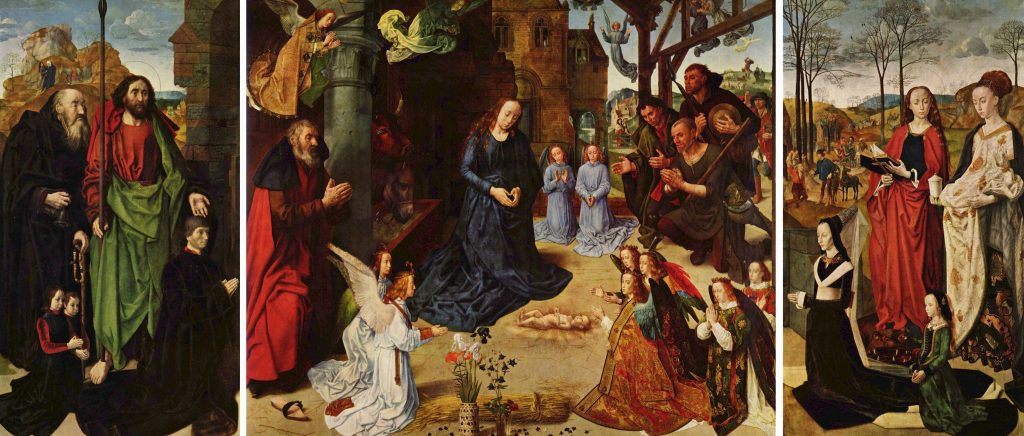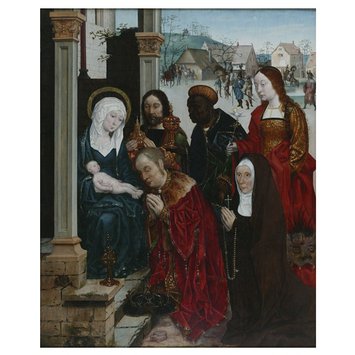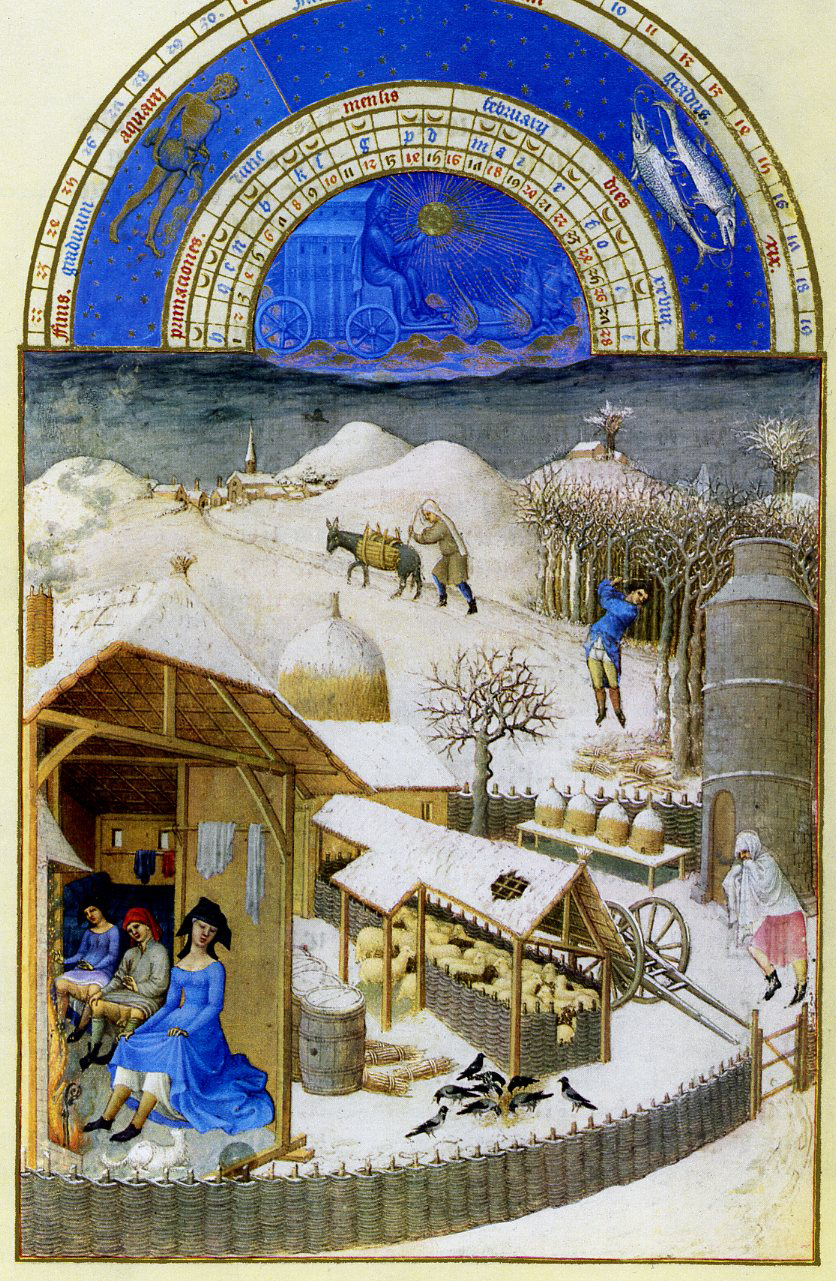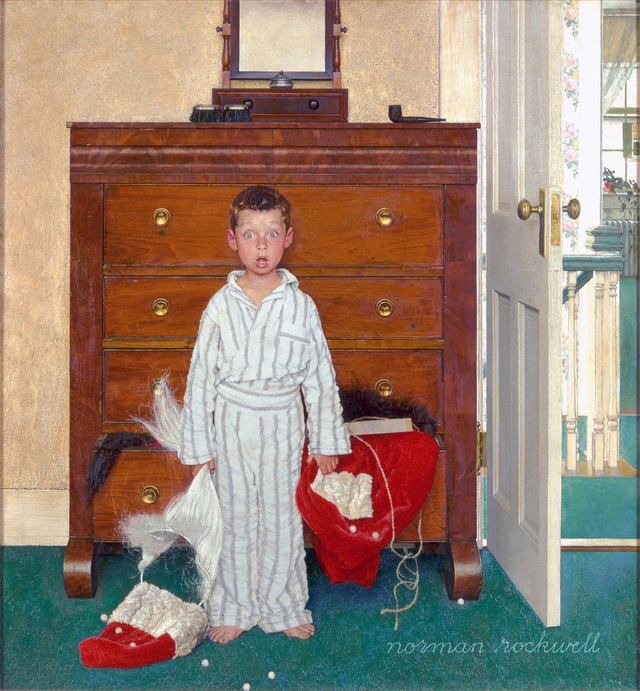There’s a cold breeze in the air and sleigh bells are jingling, which must mean that the holiday season is upon us! By now, you’re either up to your ears in wrapping paper, singing along to “Deck the Halls” as you watch a tacky Hallmark channel Christmas movie, or are so tired of hearing the same rotation of Christmas songs that you’re really starting to sympathize with the dad in Elf. Either way, we here at the Art Docent Program feel you. And that’s why we’ve compiled a list of some more…interesting “festive” pieces of art that fit in with this time of the year. So whether you’ve got that ugly Christmas sweater on or are just trying to get into the spirit, here are 7 works of art to get you jolly (or perhaps, not-so-jolly) before the month of December passes you by
- Hieronymus Bosch, The Adoration of the Magi, 1509-1510.

Though we’ve already discussed this piece in length in our post on the Prado’s Bosch exhibition, it definitely deserves mention here, as it’s one of the weirdest nativity scenes around. Bosch just kind of ignored the fact that Christmas is celebrated in winter and ran with the whole Christ-was-born-in-mid-March-and-the-wise-men-didn’t-get-there-until-two-years-later postulation. While it’s nowhere near uncommon for traditional adoration or nativity scenes not to be obviously set in winter, it is uncommon to invite the antichrist (lurking behind that post near Joseph’s head) to the party (no matter how bad holidays with your family might get). Read more on that in our post on the Prado’s Hieronymus Bosch exhibition–it’s just as weird as it sounds. But first–just imagine how a light-up nativity for the yard (made according to Bosch’s version of the Adoration of the Magi) would spice things up.
2. Hugo van der Goes, Portinari Altarpiece, 1475-76.

Nothing says Christmas like little versions of the donors in the altarpiece (seriously–look at how small they are, comparatively) and placing the baby Jesus in a depression on the ground while backing away, slowly. And if it’s not enough of a party? Invite St. Margaret of Antioch, who has arrived with her dragon. Yes. Look at the last panel–she’s standing on it. While St. Margaret is often pictured with a dragon (it’s one of her attributes, as in some versions of her story the devil eats her/attacks her in the form of the dragon [she’s saved by her faith in both versions]), it’s…unique to see her show up in a nativity scene, which means she may have been the preferred saints of one of the donors. Either way, van der Goes’ Christmas is a party.
3. Attributed to Gerard David, The Adoration of the Magi with St Margaret and a Nun, 1455-1523 (or completed in the 17th-century).

Look–snow! Here’s an example of a northern European artist painting Christmas in winter–seeing as northern European artists would be, well, a lot more familiar with snow than other southern European artists. Here we see more of St. Margaret, but without her dragon (lame). While the piece is attributed to Gerard David, there are several things about it that could hint at a later painter, possibly from the Netherlands–the landscape (common to late sixteenth-century Netherlandish paintings), the characters’ clothing (more characteristic of 17th-century works), and St. Margaret herself (who looks more like other versions of herself as painted by the Master of the Legend of Saint Magdalen), according to the V&A, who owns the painting. This suggests that it may be a “pastiche” with various parts painted by various artists, even at various points in history! And you thought keeping track of Christmas cards was hard.
4. Limbourg Brothers, February page from the Très Riches Heures, c. 1412-1416.

Though it’s not technically set in December or on a holiday, we included the February illustration in Limbourg brothers’ book of hours because it shows what The Guardian calls an “encyclopedia of winter.” Meant to entertain the Duc du Barry, the month features peasants working in the cold (and most notably, trying to get warm, in the bottom right corner). While it may highlight how far removed the duke, to whom the book belongs, is from the lives of the peasants in his jurisdiction, it serves as a wonderful look into the way these peasants live their lives in the cold winter months–years before Pieter Bruegel tackled the same subject.
5. Pieter Bruegel, The Hunters in the Snow, 1565.
_-_Google_Art_Project.jpg/1280px-Pieter_Bruegel_the_Elder_-_Hunters_in_the_Snow_(Winter)_-_Google_Art_Project.jpg)
We couldn’t not include this, especially after mentioning it above. Skaters on a frozen lake, snow-capped branches, peasants building a roaring fire–the details almost distract from the fact that the hunters haven’t really brought in very much meat to eat. A cold landscape begets a barren catch, as it were. It goes without saying that this is one of western art history’s best depictions of winter, as it makes so many subtle statements in addition to giving us a snow-blown landscape.
6. & 7., Norman Rockwell, The Discovery, 1956, and Norman Rockwell, The Carolers, or, Christmas Trio (20th century).

It’s not really the holiday season unless you’ve seen a Norman Rockwell reproduction. So here are two that aren’t your typical merry St. Nick lounging by the fireside with his pipe, filled with holiday mirth. In The Discovery, Rockwell has captured the very moment a child is scarred for life (before his parents explained to him that what he’s found is just a Halloween costume and that Santa is coming this year, “we promise, sonny!”).

The singers in The Carolers also don’t look like your average Dickensian carolers. Several look as though we’ve caught them mid-yawn. They look cold, like they might be off-tune, and are nowhere near perfect–not even the little angelic-choirboy-type. Which, perhaps, is the point–making the effort to get into the spirit of things despite things being against you.
Ho ho ho, everybody! Have a festive holiday season.
Find out more about what we do at the Art Docent Program here.
Want more fun art history blog posts? Check out our past blog posts here!







